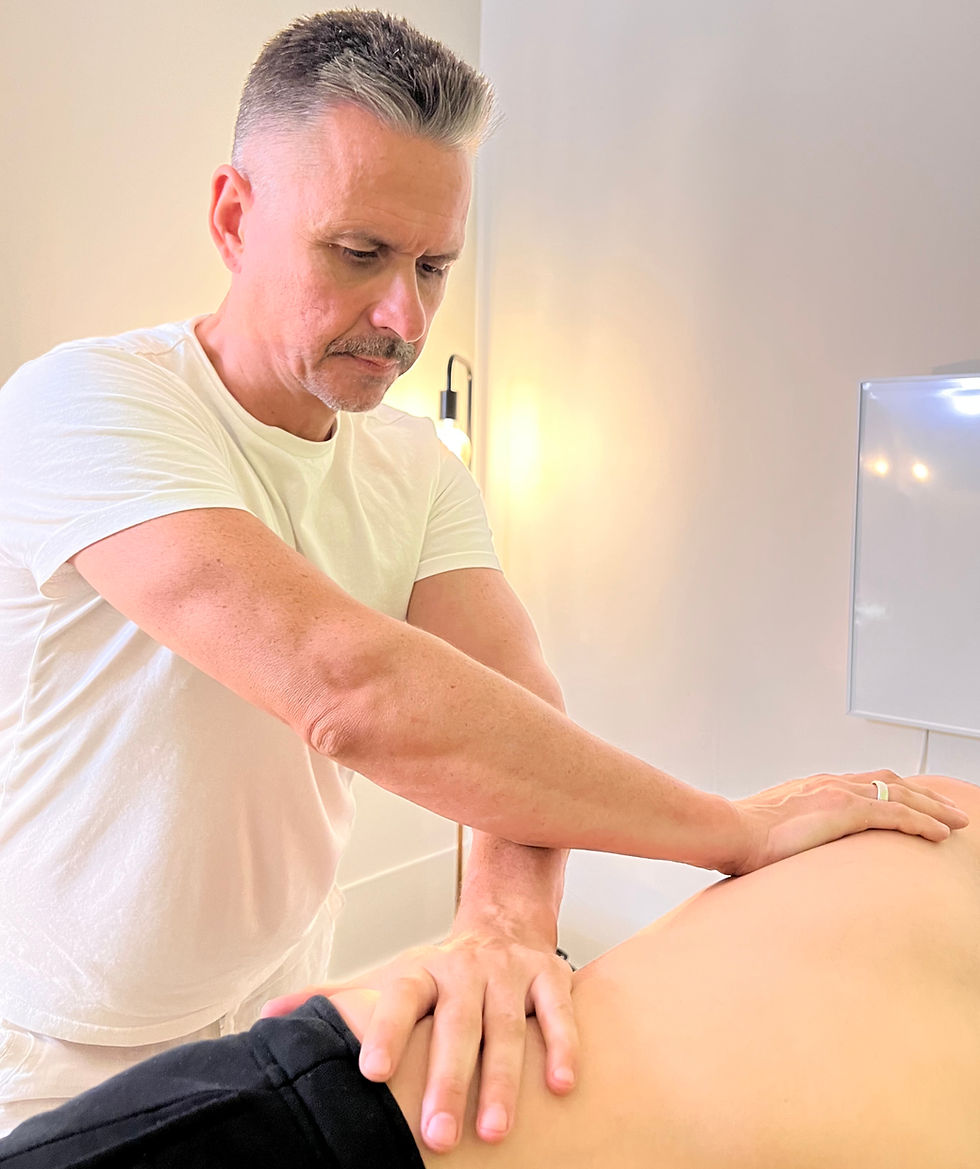TMJ Dysfunction, Clinical Massage & Myofascial Release: A Personal & Professional Perspective
- bethany wynn
- Sep 11, 2025
- 4 min read
Updated: Nov 7, 2025

My name is Bethany Wynn,
As a Level 5 Clinical Massage Therapist currently studying for my BTEC Level 6 in Advanced Clinical Massage Therapy at the Jing institute, supporting clients with TMJ dysfunction has become one of the most talked about topic. It's an area I approach not only with professional training but also deep personal experience.
I work from clinics in Waterloo and Woolwich, London, and also offer support online. My practice blends clinical massage, advanced myofascial release, intraoral techniques, and hot stone therapy to support those living with jaw pain, tension, and related symptoms. But as always in my clinic, its not always about the area thats telling you its in pain, its that global approach.
What is the TMJ you may ask?
The temporomandibular joint (TMJ) is the hinge-like joint that connects your jawbone to your skull, located just in front of each ear. It’s one of the most complex joints in the body capable of moving up and down, side to side, and forward and backward. This incredible range of motion allows us to talk, chew, yawn, and express emotion.
Because of its complexity and its deep connection to both muscular and emotional tension it can also be a major site of dysfunction. I also love the fact that the masseter muscle is the smallest and strongest muscle in the body which makes perfect sense from all the support it gives to the chewing, talking, laughing we do with our jaw.
Symptoms of TMJ Dysfunction
TMJ dysfunction (sometimes called TMD) can present in many different ways for everybody.
Common symptoms include:
Jaw pain or stiffness
Clicking, popping, or locking of the jaw which could suggest a displacement of the articular disk which supports the joint itself
Headaches or migraines
Ear pain without infection or a sensation of fullness
Neck, shoulder, or facial tension
Clenching or grinding teeth (bruxism)
Difficulty opening the mouth wide (trissimus)
Facial asymmetry or a sense of imbalance
These symptoms are often made worse by stress, trauma or emotional holding especially around the face, throat, and diaphragm.
A Fascial Perspective: The Deep Front Line
What many people don’t realise is that the jaw is not an isolated structure. It’s part of a continuous line of fascia known as the Deep Front Line (DFL) a myofascial meridian that runs from the jaw and tongue, through the throat, diaphragm, psoas, pelvic floor, and all the way down to the feet.
This means that tension in the TMJ can be connected to issues in the pelvis, hips, diaphragm, or even how we stand and move. Likewise, pelvic instability, postural compensation, or unresolved trauma in the lower body can subtly pull tension up the chain eventually showing up in the jaw.
That’s why in my treatments, I work both globally and specifically. Addressing the bigger picture helps us understand not just where the pain is, but why it’s happening and how to support real, lasting change.
My Approach: Clinical Massage, Myofascial Release & Intraoral Work
Every TMJ-focused session begins with a thorough consultation, and is guided by consent, communication, and collaboration throughout.
My training in Advanced Clinical Massage and Myofascial Release allows me to work in a highly tailored way combining structural assessment with hands-on techniques that support the body release tension in a trauma informed and safe way
A session might include:
External massage for the jaw, neck, face, and shoulders (or areas that are associated with the pain)
Myofascial release to unwind deeper restrictions through the head, neck, ribs, and pelvis
Intraoral work (with gloves and full consent) to access key muscles like the pterygoids, which are often involved in jaw tension as well as attachment points of the temperalis and the masseter muscle of course.
Thorax and rib release to support breathing and diaphragm function
Hot stones for softening protective tension and encouraging deep release
This is always adapted to your comfort level, needs, and goals, whether you’re experiencing chronic TMJ dysfunction or just starting to notice signs of tension in this area.
Why This Work Matters to Me
I’ve lived with TMJ dysfunction for most of my adult life. As a singer originally, my jaw and voice have always been central to how I connect with the world. But after moving through grief and trauma, I began to notice how my jaw had become a place of holding, tight, painful, braced.
This wasn’t just about clenching my teeth at night. It was my body protecting and containing what I hadn’t been able to fully process. Doing this work, first on myself, then with clients has been a journey of integration, softening, and reconnection.
Supporting others with similar challenges is now a central part of my practice and a true privilege.
Interested in Booking or Learning More?
I offer TMJ-focused clinical massage in Waterloo and Woolwich, London, and also offer online support for education, self-massage, and guided release techniques.
If you’re experiencing jaw pain, facial tension, or any of the related symptoms mentioned above, you're not alone and it doesn't have to be permanent. There are effective, compassionate ways to support your body and move toward relief.
Im excited and fascinated by this work and it truly supports so many and i invite you to ask me questions in your next treatment with me and lets connect the puzzle together.
By Bethany Wynn
You can learn more or book a session at our booking page with bethany wynn






Comments